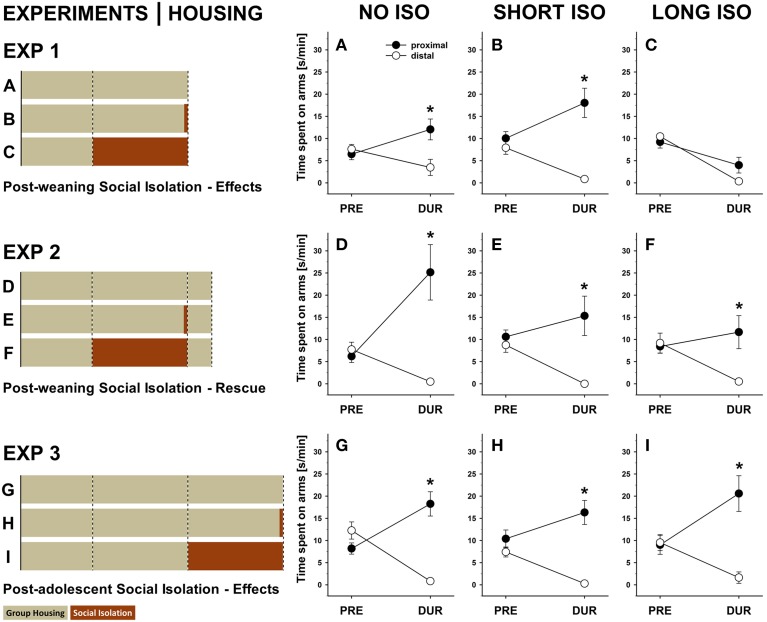Figure 4.
Post-weaning but not post-adolescent social isolation leads to a lack of approach behavior in response to pro-social 50-kHz USV that can be reversed by re-socialization: within-group comparisons. (A–C) Line graphs depicting changes in side preferences as assessed by the time spent [s/min] on proximal (black) and distal (white) arms displayed by rats exposed to 4 weeks of (A) NO ISO, (B) SHORT ISO, and (C) LONG ISO, post-weaning, during the baseline period (5 min; PRE) and during playback (1 min; DUR) in response to 50-kHz USV in Experiment 1: Post-weaning Social Isolation—Effects. (D–F) Line graphs depicting changes in side preferences as assessed by the time spent [s/min] on proximal (black) and distal (white) arms displayed by rats exposed to 4 weeks of (D) NO ISO, (E) SHORT ISO, and (F) LONG ISO, post-weaning, plus one additional week of peer rearing, during the baseline period (5 min; PRE) and during playback (1 min; DUR) in response to 50-kHz USV in Experiment 2: Post-weaning Social Isolation—Rescue. (G–I) Line graphs depicting changes in side preferences as assessed by the time spent [s/min] on proximal (black) and distal (white) arms displayed by rats exposed to 4 weeks of (G) NO ISO, (H) SHORT ISO, and (I) LONG ISO, post-adolescent, during the baseline period (5 min; PRE) and during playback (1 min; DUR) in response to 50-kHz USV in Experiment 3: Post-adolescent Social Isolation—Effects. *p < 0.050 compared to distal arm time.

